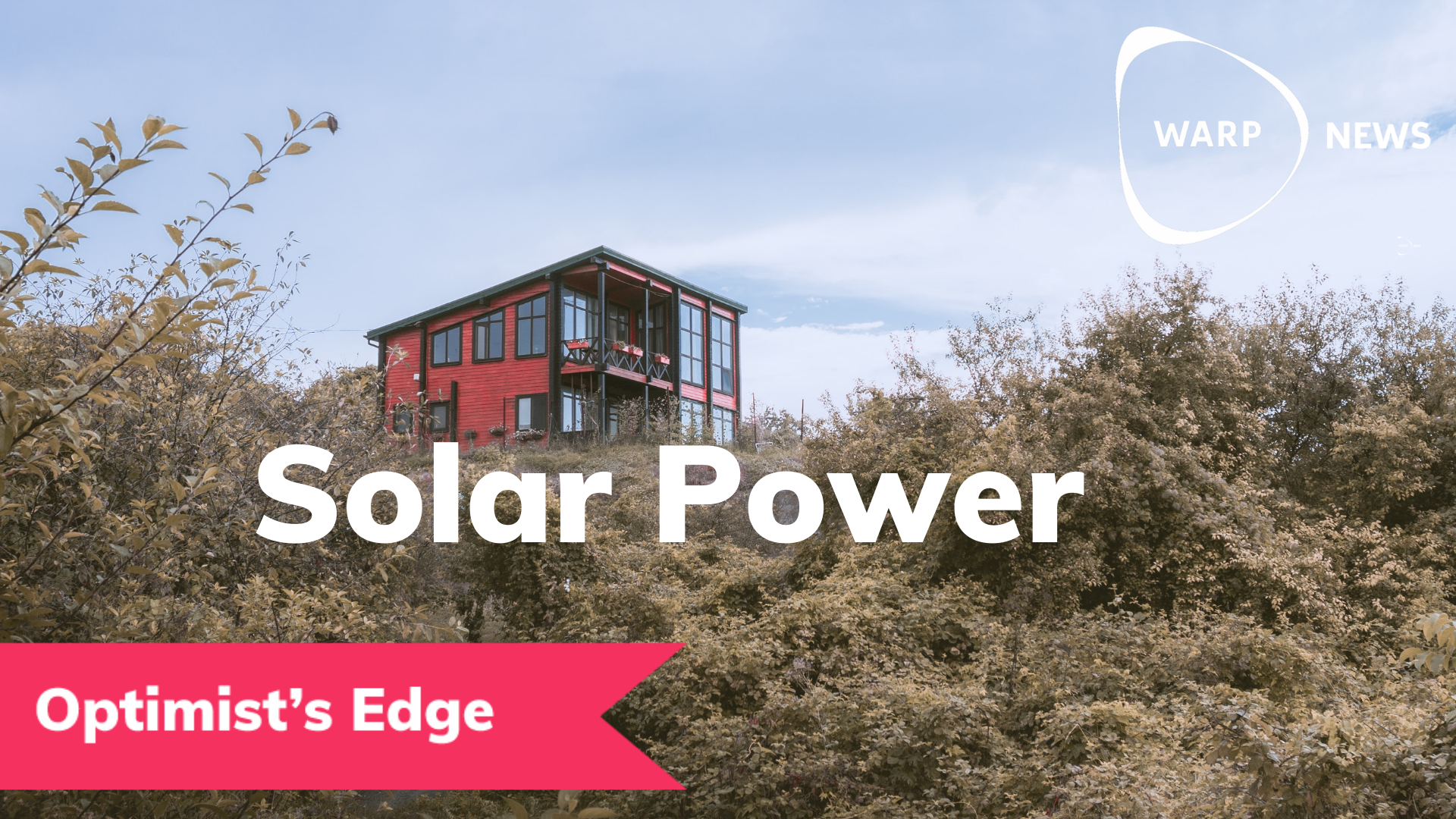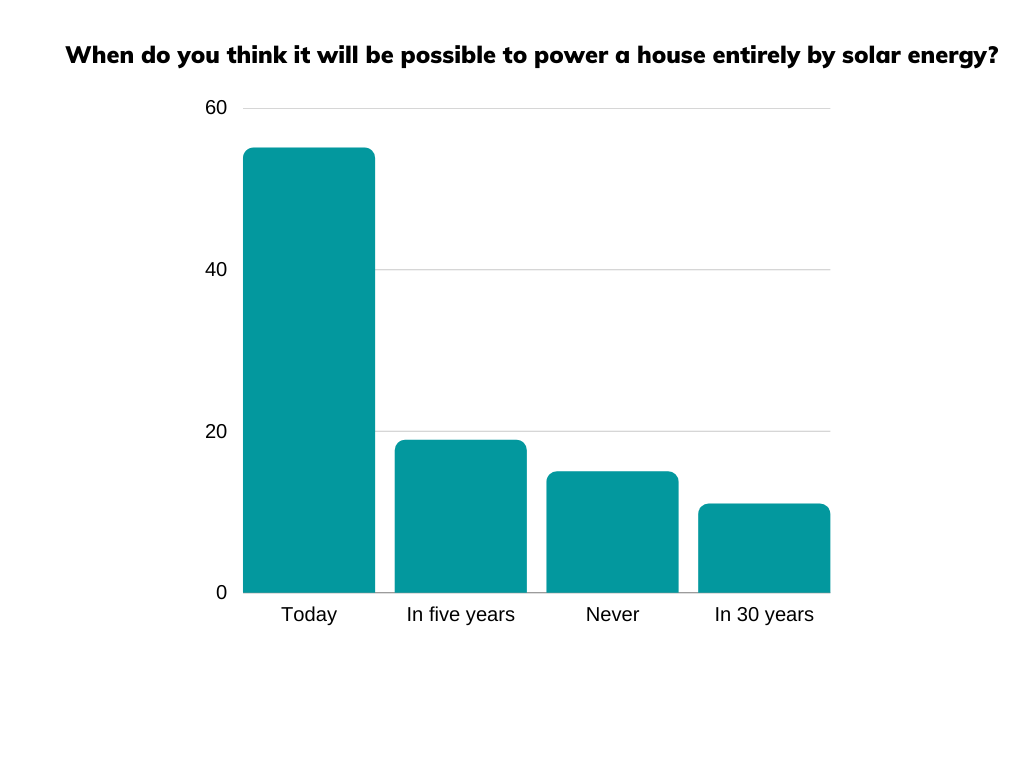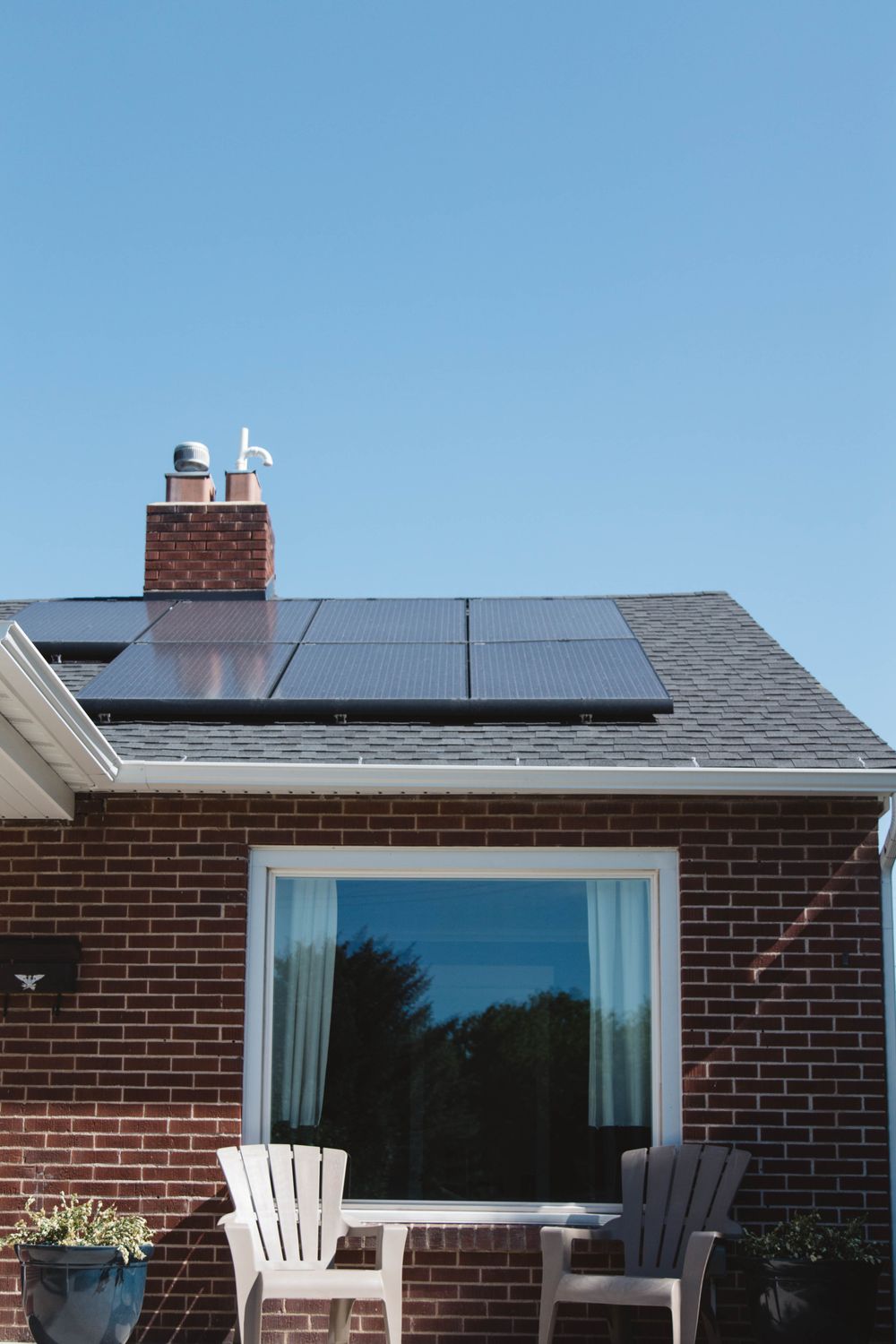
💡 Optimist's Edge: Now is the time to put solar cells on your summer house
Most people think that solar energy is expensive - and will take time to achieve widespread adoption. This is wrong! In fact, it may soon be possible to meet your household energy needs by using solar power.
Share this story!
📉What people think
Most people believe that solar energy is expensive and will be even more costly in the future (Warp survey January 2022). And when Warp asks if it is possible to run a house entirely on solar energy, 26 percent think it will take 30 years or more (just over 15 percent answer never!) before that will be possible. 45 percent do not believe that it is possible to run a house with solar energy alone. But, 55 percent believe that it is likely already today.

📈 Here are the facts
- Solar energy has become much cheaper. Over the past decade, the environmentally friendly energy alternative costs have fallen sharply. This is a cost reduction of 70 to 90 percent in ten years. This trend is also expected to continue as the technology develops further.
- The energy source accounts for about one-tenth of energy production in several European countries. During June-July of last year, seven countries had an energy production from solar close to ten percent, and the Netherlands and Germany reached 17 percent.
- In the U.S, solar energy is the fastest growing and most affordable source of new electricity. In 2020 it amounted to three percent of electricity but could grow to 20 percent by 2050.
- Some countries, including Sweden, are slipping. Despite increasing interest from private individuals, the government is still lagging and reaching just under one percent of total electricity production.
- There still remain obstacles in the form of restrictions on where you can get permission to build solar parks.
- It is possible to - using storage solutions - and on a smaller become self-sufficient on solar energy. But even if a broader expansion of solar energy is lagging, you can make a difference today. At least on a smaller scale and with storage capacity, it is possible to be pretty much self-sufficient through solar energy in Sweden.
- In the U.S, consumers calculate with seven years spent on solar energy before it starts paying back: "It should pay me back within about seven or eight years, so that I break even at that point and then start saving".
- Getting started with solar cells has never been easier.

Read more:
- Homeowner's guide to installing solar energy in the U.S
- What does it cost and how does it work?
- How to buy and sell solar power.
- How to get started with solar ( Australian guide)
💡 Optimist's Edge
There are many benefits to choosing solar panels as your primary energy source.
💡 Solar cells on your house gives you a reliable local energy source that makes you more independent, regardless of whether the production is "only" for your own consumption. You can calculate the return on your investment quicker than you think.
The edge come in three steps:
1)When you become self-sufficient in solar energy, you have an efficient and environmentally friendly electricity production up close - at the same time as you also become an energy producer for others.
2)You contribute to the demand for solar energy as an energy type, thereby putting pressure on the larger green transition to move even faster, for example, to reconsider restrictions on what areas of land can be used for solar cells.
3)You learn how to handle a form of energy and production on a smaller scale that later could be useful for a permanent residence and other more significant and more complex buildings and activities, that in the long run may be run either wholly or partly by solar energy.
- As a bonus, you increase the value of your house by installing solar cells.
👇 How to get an Optimist's Edge
It is high time to install or own a solar energy system, especially for a house used during a limited part of the year when the sunshine hours are multiple. The technology is efficient, costs are dropping, and the sooner it achieves broad adoption, the more advantageous it will be for all users.
❓ So, how do you get the benefit of this knowledge?
Install, store, use, and sell!
Solar panels in the U.S cost, on average, about $16,000, or between $3,500 to $35,000 depending on the type and model.
Forbes offers a guide to different companies within installation and reminds prospective users about the benefits of installing during the winter period.
Several guides describe all the steps in the process of owning and installing your photovoltaic system, from identifying the best location to installation.
- Store or sell any surplus that you produce - the profit here is more about environmental benefit than making money. The most advantageous given existing fees around is for most people still to produce the electricity you use, no more.
Taking the edge a step further:
- Solar energy as a type of energy grows when more people adopt it - which is positive from a climate perspective.
- More people are becoming more "energy autonomous" - with all the freedom and independence that entails.
- In an increasingly turbulent situation where energy shortages can become a reality, locally produced energy provides comfort.
You now have an advantage because you have gained this knowledge before most others - what will you do with your Optimist's Edge?
❓Do you want more? Discuss with others in our forum!
Share your ideas and thoughts with other Premium Supporters in our Facebook group. Maybe you will find a prospective business partner or investor.
By becoming a premium supporter, you help in the creation and sharing of fact-based optimistic news all over the world.


